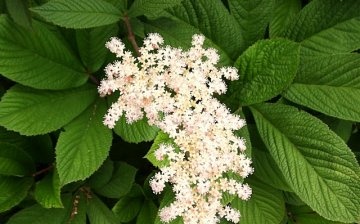Rogers in the photo. Growing Rogers
Rogersia is a perennial of the saxifrage family. The plant is shade-tolerant and grows well even in the darkest corners of the garden. Rogersia in the photo looks like a powerful herb, consisting of rosettes and peduncles that have grown into a large clump. Against the background of powerful green leaves, inflorescences-panicles of white, cream or pink color look spectacular. The plant can reach a height of one meter.
Rogersia reproduces vegetatively, by dividing the bush, and by seeds. But the seed reproduction of this plant is troublesome, after collecting the seeds they are stratified, in the spring they are sown for seedlings, after germination they dive and planted in the ground. Seedlings grow slowly, and flowering occurs only in 3-4 years.
Therefore, gardeners usually use the division of the bush immediately after flowering or in the fall. Delenki, unlike seedlings, develop quickly, and after a couple of years they become fully mature plants. Rogersia is unpretentious, and has been growing in one place for decades. Water it abundantly, and mulch the soil around the plant. Lack of moisture leads to a decrease in decorativeness and the appearance of brown tips on the leaves. To make the plant look aesthetically pleasing, you need to promptly remove dry leaves and faded flower stalks, cutting them off to the first leaf.
In the spring, nitrogen fertilizers can be applied for a faster set of green mass. In the fall, the Rogers in the photo has leaves of reddish-purple tones. Before winter, they are cut to the ground, and the roots are covered with spruce branches, dry foliage or peat. Spring return frosts are very dangerous for the plant. At this time, it is better to cover him.



